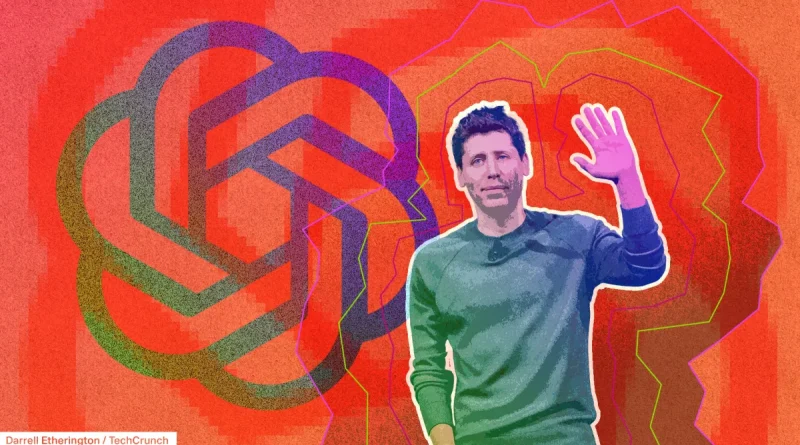Sam Altman: OpenAI is Poised for More Significant Deals Beyond Current Partnerships with Stargate, Oracle, Nvidia, and AMD
Right around the same time Nvidia’s CEO Jensen Huang expressed his surprise at OpenAI’s multibillion-dollar partnership with AMD—shortly after Nvidia announced a $100 billion investment in the AI model developer—Sam Altman revealed that more similar agreements are on the way.
Huang appeared on CNBC’s Squawk Box on Wednesday. When asked if he had prior knowledge of the AMD deal before its announcement, he responded, “Not really.”
As previously reported by TechCrunch, OpenAI’s agreement with AMD is notably distinctive. AMD has committed to providing OpenAI with significant stock grants—up to 10% of the company over several years, contingent on conditions like stock price increases. In return, OpenAI will use and help develop AMD’s next-generation AI GPUs, thus making OpenAI a shareholder in AMD.
In contrast, Nvidia’s investment strategy focuses on investing in the AI startup, consequently making it a shareholder in OpenAI.
While OpenAI has been leveraging Nvidia hardware for years via cloud providers such as Microsoft Azure, Oracle OCI, and CoreWeave, Huang clarified, “This is the first time we will sell directly to them.” He added that Nvidia plans to continue supplying equipment to cloud providers.
These direct sales, which include AI equipment beyond GPUs like systems and networking, are meant to “prepare” OpenAI for its shift to being its own “self-hosted hyperscaler,” said Huang. This means that OpenAI will operate its own data centers.
However, Huang acknowledged that OpenAI currently doesn’t “have the money yet” to cover the costs of this equipment. He estimated that establishing each gigawatt of AI data center would set OpenAI back “$50 to $60 billion,” accounting for land, power, servers, and equipment.
Techcrunch event
San Francisco
|
October 27-29, 2025
As of 2025, OpenAI has secured 10 gigawatts of U.S. facilities through its $500 billion Stargate agreement with Oracle and SoftBank. Additionally, it has entered into a $300 billion cloud deal with Oracle.
Its collaboration with Nvidia involves at least 10 gigawatts of AI data centers, while its partnership with AMD covers 6 gigawatts. Furthermore, the “Stargate UK” collaboration includes plans to expand data centers in the U.K., along with other commitments in Europe. Some estimates indicate that OpenAI has captured $1 trillion in deals this year.
Similar to the arrangement with AMD, Nvidia’s deal has faced scrutiny for being “circular,” as reported by Bloomberg. Critics suggest that Nvidia is effectively financing OpenAI’s purchases while acquiring stock in the AI startup in exchange.
Altman to the world: Expect more
While Huang discussed OpenAI’s infrastructure needs on CNBC, OpenAI CEO Sam Altman’s interview on the a16z Podcast with Andreessen Horowitz was released.
During the podcast, a16z co-founder Ben Horowitz praised Altman for the “enhanced deal structure,” referring to these latest agreements. As an OpenAI investor, it seems unlikely he would not be impressed. OpenAI has successfully secured billions of dollars’ worth of equipment at minimal cost. Repeatedly.
When prompted about these recent partnerships, Altman remarked, “You should expect much more from us in the coming months.”
Altman envisions that OpenAI’s future models and upcoming products will be significantly advanced, leading to heightened demand. This has prompted the decision to make a major infrastructure investment. “It is time to make a very aggressive infrastructure bet,” he stated.
The difficulty arises from the fact that OpenAI’s current revenue doesn’t approach $1 trillion, although it is reportedly growing quickly, reaching $4.5 billion in the first half of 2025.
Nonetheless, Altman strongly believes that this investment will ultimately lead to returns. “I’ve never been more confident in the research roadmap ahead of us and the economic value that will emerge from utilizing those [future] models,” he said.
However, he indicated that OpenAI cannot achieve all this potential in isolation.
“To make this kind of investment at this scale, we essentially need the entire industry, or a significant portion of it, to support us. This includes everything from the electrons to model distribution and all the elements in between, which is considerable. So we’re looking to partner with multiple entities,” Altman said, suggesting that additional agreements are on the horizon.
So buckle up, tech industry. OpenAI is still actively pursuing new opportunities.



